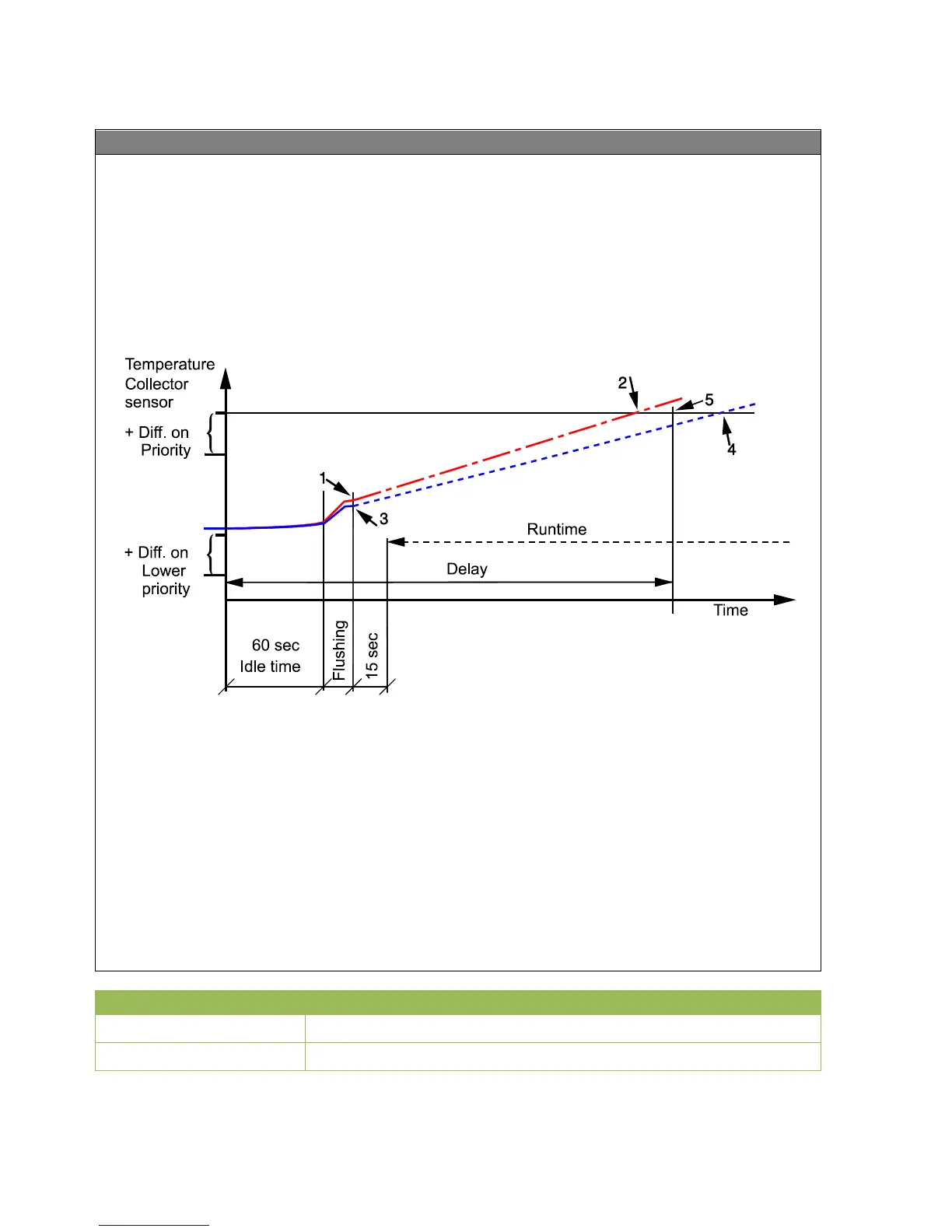In solar thermal systems which supply more than one consumer (e.g. a DHW cylinder, buffer
cylinder, pool), priorities normally need to be set for the various circuits. There are two basic
methods for controlling a system of higher and lower priorities.
• Absolute priority: The temperature in the higher priority cylinder must have reached its
limit (MAX threshold) before the system will switch to the next lower priority.
• Relative priority: Charging starts with the cylinder with which the collector reaches the start
differential first, even if it is a lower priority consumer.
The device monitors the collector temperature while the lower priority consumer is being charged.
If, while the pump is running, the collector temperature once again reaches the start differential
(collector – reference) for the consumer currently being charged, the priority timer will be activated.
If a radiation sensor is being used, the radiation level must exceed a threshold value, instead of the
temperature differential.
The priority timer shuts down the pump for the idle time (60 s). After the flushing period (1 / 3) the
controller calculates the increase in the collector temperature. It recognises whether the
programmed delay will suffice to heat the collector to the temperature for the higher priority
consumer (5). In case 2, the system waits to change over to the higher priority, as the collector
temperature will reach the start temperature for the higher priority consumer before the end of the
delay. If the controller determines that the increase within the delay will not suffice (case 4), it
aborts the procedure and must wait until the end of the runtime before reactivating the priority timer
with the idle time (60 seconds). The system remains in the lower priority during the runtime.

